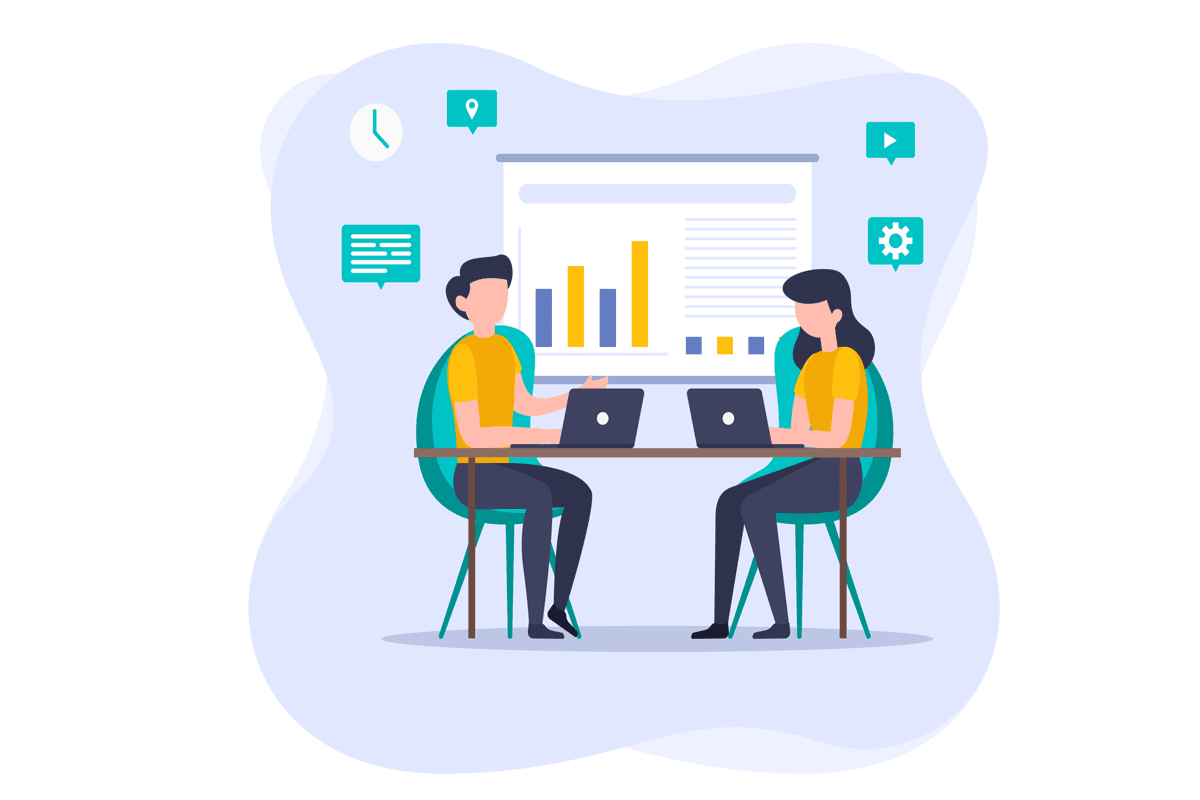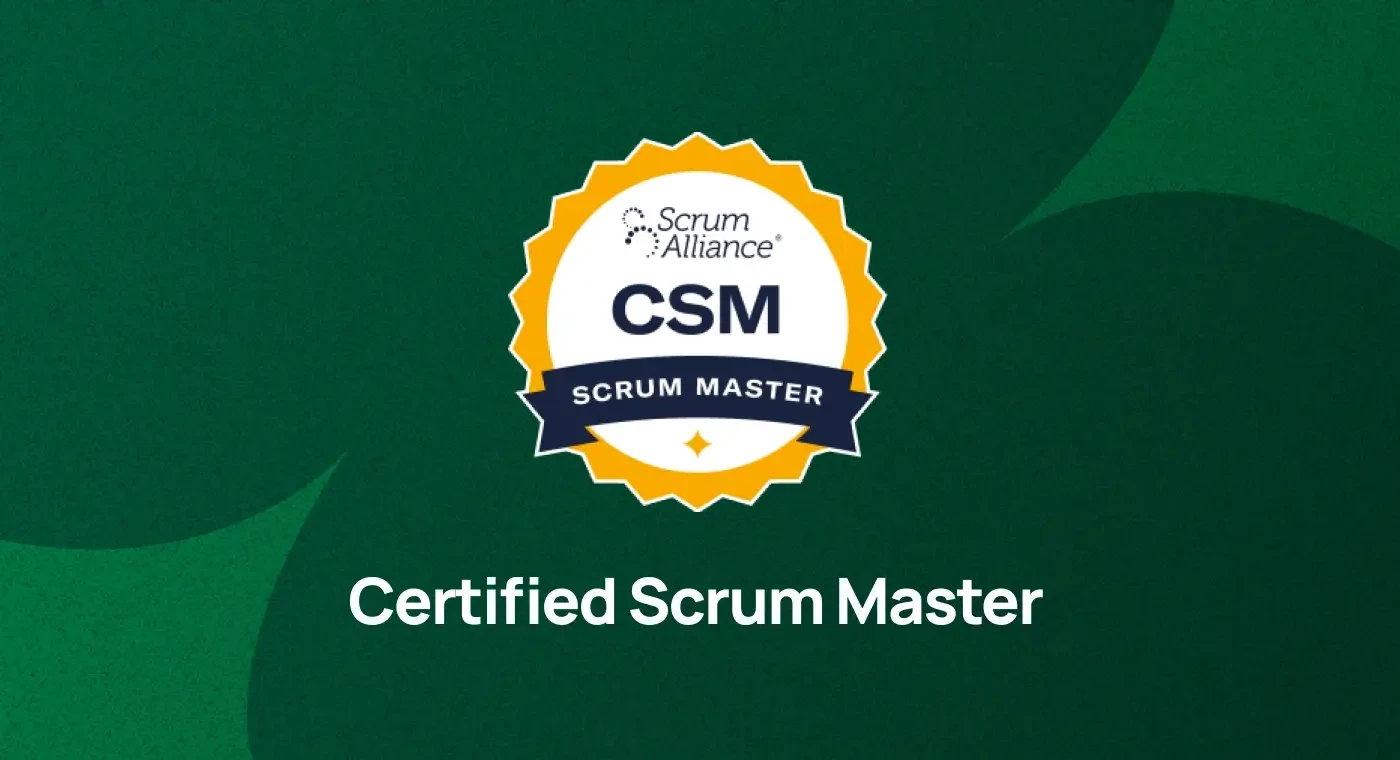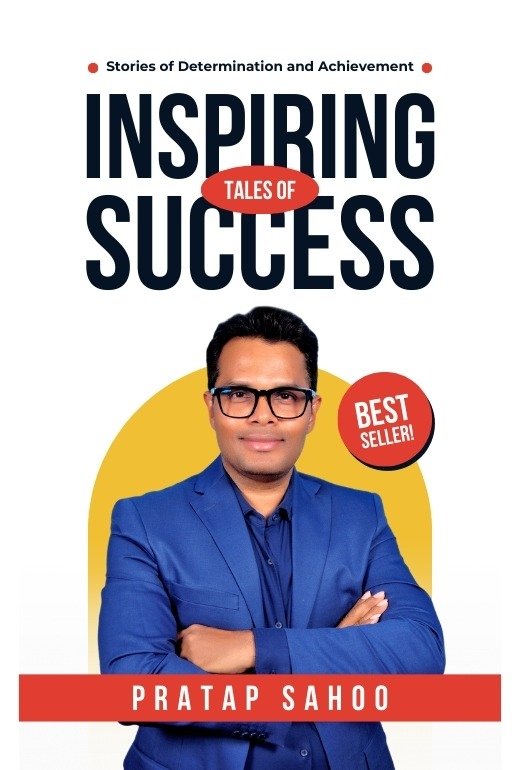Currently Empty: ₹0.00
Business Management
Business Analysis Interview Questions and Answers
A product owner in Scrum team who is responsible for the outcome of the project. He maximizes the value of the product by managing and optimizing the product backlog. A product owner’s key responsibility is to define user stories and create a product backlog. No matter whether you are a beginner or an intermediate or an experienced product owner, this write-up will aid you in increasing your confidence and knowledge of product owner. The questions below are divided into various topics catering to product owner. They range from story grooming, user story splitting and estimation, burn down charts and more. Also, this guide provide step-by-steo explanations for every question which will help you understand the concepts well. With Product Owner interview questions, you can be confident about your preparation for the upcoming interview.
Question 1-5
- What is Business Analysis?
Business Analysis involves identifying business needs and determining solutions to business problems. - Who is a Business Analyst (BA)?
A professional who analyzes business needs, defines requirements, and helps implement solutions. - What are the key responsibilities of a BA?
Gathering requirements, stakeholder communication, solution assessment, and documentation. - What is a requirement?
A condition or capability needed by a stakeholder to solve a problem or achieve an objective. - What are the different types of requirements?
Business, stakeholder, functional, non-functional, transition.
Question 5-10
What are the seven processes in PRINCE2?
Starting Up a Project, Directing a Project, Initiating a Project, Controlling a Stage, Managing Product Delivery, Managing a Stage Boundary, Closing a Project.What is a Business Case in PRINCE2?
A document justifying the start and continuation of a project.What is a stage in PRINCE2?
A management segment of the project used for control and planning.What is a product in PRINCE2 terms?
Any output or deliverable created as part of the project.What is the purpose of the Organization theme?
Defines roles and responsibilities of the project management team.
Question 10-15
- What is a System Requirement Specification (SRS)?
A document that describes system functionalities and constraints. - What is stakeholder analysis?
Identifying stakeholders and understanding their needs and influence. - What is scope creep?
Uncontrolled expansion to product or project scope without adjustments to time, cost, or resources. - What is gap analysis?
Comparing current state with the desired future state to identify gaps. - What is SWOT analysis?
Evaluates Strengths, Weaknesses, Opportunities, and Threats.
Question 15-20
What is an exception?
A deviation beyond agreed tolerances.What is a tolerance?
Allowable deviation from a plan without triggering an exception.What is the focus of the Quality theme?
Ensuring that products meet defined quality criteria.What are quality criteria?
Standards or benchmarks that define if a product meets quality requirements.What is a Highlight Report?
A report from the Project Manager to the Project Board on project progress.
Question 20-25
- What is a process flow diagram?
A visual representation of the workflow or business process. - What are KPIs?
Key Performance Indicators – metrics used to measure project or business success. - What is Agile methodology?
An iterative approach to software development emphasizing collaboration and flexibility. - What is Waterfall methodology?
A sequential project management approach where each phase must be completed before the next. - What is elicitation in BA?
The process of gathering information from stakeholders.
Question 25-30
- What is the purpose of modeling in BA?
To visualize processes, systems, or data flows. - What are functional specifications?
Descriptions of how a system will fulfill requirements. - What is data modeling?
The process of creating a data model to define and structure data. - What is the difference between BA and PM?
BA defines requirements; PM manages the project delivery.
Question 30-35
- Name some elicitation techniques.
Interviews, workshops, observation, document analysis, surveys. - What is validation in BA?
Ensuring the solution meets the business needs. - What is verification in BA?
Ensuring the solution is built correctly according to specifications. - What is a stakeholder?
Anyone who is affected by or can influence the project. - What is UML?
Unified Modeling Language – used to visualize and model system design.
Question 35-40
- What is a mock-up?
A visual sample of a product interface. - What is backlog prioritization?
Ranking user stories based on business value, risk, and urgency. - What are acceptance criteria?
Conditions that must be met for a solution to be accepted by the user. - What is a decision tree?
A flowchart that helps in choosing between alternatives. - What are story points?
A measure of effort required to implement a user story.
Question 40-45
- What is a wireframe?
A blueprint or schematic for the UI design of an application. - What is benchmarking?
Comparing business processes with industry best practices. - What is a RACI matrix?
A chart assigning roles: Responsible, Accountable, Consulted, Informed. - What is risk analysis?
Identifying potential problems and evaluating their impact. - What is a prototype?
A working model of the system to visualize functionalities.
Question 45-50
- What is a product owner?
A Scrum role responsible for defining product features and priorities. - What is a business case?
Justification for starting a project based on benefits, costs, and risks. - What is timeboxing?
Fixing a time period to complete a task or iteration. - What is the difference between needs and requirements?
Needs are high-level goals; requirements are specific ways to fulfill them. - What tools do BAs use?
MS Visio, JIRA, Trello, Confluence, Balsamiq, Lucidchart, SQL.
Question 1-5
- How do you prioritize requirements?
Using MoSCoW (Must, Should, Could, Won’t), risk analysis, or business value. - What is an activity diagram?
A UML diagram showing the flow of control from activity to activity. - How do you handle changing requirements mid-project?
Assess impact, get stakeholder approval, update documents and communicate changes. - What is value stream mapping?
A Lean technique to visualize and improve the flow of value. - What is business process reengineering?
A fundamental rethink and redesign of business processes to achieve improvements.
Question 5-10
- How do you manage conflicting requirements?
Engage stakeholders, facilitate workshops, and prioritize based on business goals. - What is the difference between a use case and user story?
Use cases are detailed; user stories are short and Agile-focused. - What are pre-conditions and post-conditions in use cases?
Pre: conditions that must be true before execution; Post: expected results after execution. - What is Six Sigma?
A data-driven approach to eliminate defects and improve quality. - What is BPMN?
Business Process Model and Notation – standard for modeling business processes.
Question 10-15
- What are the limitations of SWOT analysis?
It lacks prioritization, quantification, and is subjective. - What is a scenario?
A narrative describing a possible use of a system. - How do you create a business model canvas?
Map out key elements: value propositions, customers, channels, revenue, etc. - What are personas in BA?
Fictional users representing real user groups for product design. - What is enterprise analysis?
Identifying and defining business opportunities for improvement.
Question 15-20
- How do you identify process bottlenecks?
Through observation, metrics, and process mapping. - What is fishbone (Ishikawa) diagram?
A tool for root cause analysis. - What are elicitation challenges?
Unclear needs, language barriers, lack of stakeholder availability. - What is TOGAF?
A framework for enterprise architecture design. - What is system analysis?
Understanding the current system to identify problems and opportunities.
Question 20-25
- What is the difference between business rule and requirement?
Rule: constraint or condition; Requirement: a need to be met. - What is an FRS?
Functional Requirements Specification – detailed system functions. - What is the BABOK guide?
Business Analysis Body of Knowledge – BA standards and practices. - What is benchmarking vs baselining?
Benchmarking = comparing to industry; Baseline = internal reference point. - What is impact analysis?
Assessing consequences of a change request.
Question 25-30
- What is traceability and why is it important?
Ensures each requirement is linked from origin to delivery/test. - What is Kano model?
Prioritization model classifying features into must-have, delight, and neutral. - How do you validate requirements?
With stakeholders through reviews, walkthroughs, or prototypes. - What is regression testing?
Verifying that recent changes haven’t broken existing functionality. - What is test case design in BA?
Designing test steps and expected results to verify requirements.
Question 30-35
- What is ETL?
Extract, Transform, Load – data processing in data warehousing. - What is CR (Change Request)?
A formal request to modify the system or requirements. - How do you estimate effort in BA?
Use analogy, expert judgment, or bottom-up estimation. - What is non-functional testing?
Testing attributes like performance, security, and usability. - What is the difference between validation and verification?
Validation checks "Are we building the right product?"; Verification checks "Are we building the product right?"
Question 35-40
- What is data dictionary?
A repository containing data definitions and formats. - What is backlog refinement?
Regular review and update of the product backlog. - How do you document a business requirement?
Clearly, concisely, with proper structure (e.g., ID, description, priority). - What is a current state vs future state?
Current = As-Is; Future = To-Be process or system. - What is requirement volatility?
The rate at which requirements change during a project.
Question 40-45
What is change control?
Managing changes to the project’s baseline scope, products, or documents.What is the Change Authority?
The person or group authorized to approve change requests.What is a product description?
A detailed description of a product including quality criteria.What is a quality register?
A log of all planned and actual quality activities.What is tailoring a theme?
Adapting the specific theme elements to fit the project environment.
Question 45-50
- What is MVP (Minimum Viable Product)?
A basic version of a product with enough features for initial users. - What is value proposition?
The value a product or service delivers to customers. - What is system integration testing (SIT)?
Testing how different system components work together. - What is RTM (Requirement Traceability Matrix)?
A document mapping requirements to test cases. - What is the role of a BA in UAT?
Support test planning, clarify requirements, and facilitate issue resolution.
Question 1-5
- How do you measure the success of a business analysis effort?
Through stakeholder satisfaction, requirement quality, and delivered business value. - How do you handle incomplete requirements?
Use iterative elicitation, stakeholder feedback, and prototypes. - What is cost-benefit analysis in BA?
Comparing expected benefits of a solution against its costs. - How do you align business analysis with strategic goals?
Use enterprise analysis and align requirements with business objectives. - How do you ensure data quality in business analysis?
Through data profiling, cleansing, and validation rules.
Question 5-10
- What is root cause analysis?
Identifying the fundamental cause of a problem. - How do you manage dependencies across multiple teams?
Through coordination meetings, dependency maps, and shared backlog tools. - What is the BA’s role in DevOps?
Define requirements for CI/CD pipelines, monitor feedback, and improve flow. - How do you create a business architecture?
Define capabilities, value streams, organizational structure, and systems. - What is digital transformation in BA?
Using technology to improve or replace traditional business processes.
Question 10-15
What is a Project Board?
A decision-making body consisting of Executive, Senior User, and Senior Supplier.What is a Project Brief?
A high-level definition of the project created during the "Starting Up a Project" process.What is a Project Initiation Document (PID)?
A detailed plan that acts as a contract between the project manager and the project board.What is tailoring in PRINCE2?
Adapting PRINCE2 principles, themes, and processes to suit the project environment.What is a risk in PRINCE2?
An uncertain event that may affect project objectives.
Question 15-20
What’s the difference between business capability and process?
Capability = what the business can do; Process = how it does it.How do you model a complex system?
Use layered models: context diagram, data model, process maps.What are the pillars of Business Analysis Center of Excellence (CoE)?
Standards, training, governance, tools, and community.What is your approach to digital product discovery?
Customer interviews, journey mapping, MVP definition, and rapid prototyping.What’s the BA role in agile transformation?
Coaching teams, defining backlog items, ensuring business alignment.
Question 20-25
- What’s customer journey mapping?
Visualizing the customer experience across touchpoints and pain points. - What is predictive vs. adaptive business analysis?
Predictive = plan-driven; Adaptive = change-driven. - How do you handle analysis paralysis?
Focus on MVP, timebox decisions, and engage stakeholders iteratively. - What is business model innovation?
Redesigning business models for competitive advantage. - What’s your BA strategy for AI/ML solutions?
Define problem, collect quality data, validate models, assess ethical impacts.
Description
The Product Owner is a pivotal role in an Agile team, serving as the primary liaison for stakeholder needs and representing the team’s goals and progress. They are solely accountable for maintaining the quality and value of the team’s output and own the responsibility for managing the product backlog.
Demand for skilled Product Owners is strong across industries. A quick look at job postings shows top companies actively seeking candidates for this role. Currently, there are over 300 open Product Owner positions on LinkedIn in Spain alone. Research indicates that the average annual salary for a Product Owner in the United States is around $105,158, while in India, the average salary is approximately ₹9,97,286 per year, according to Indeed.








